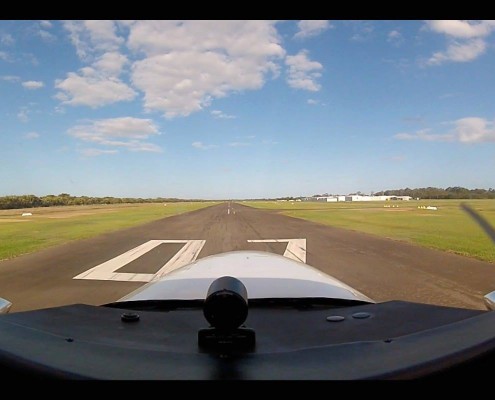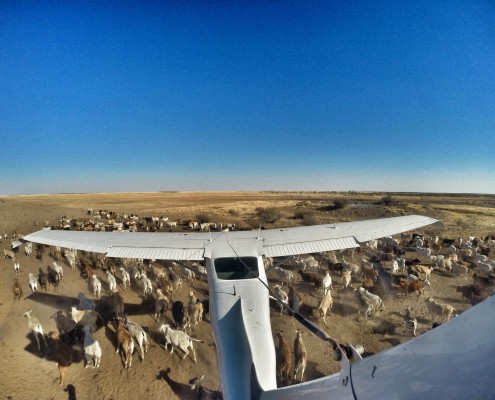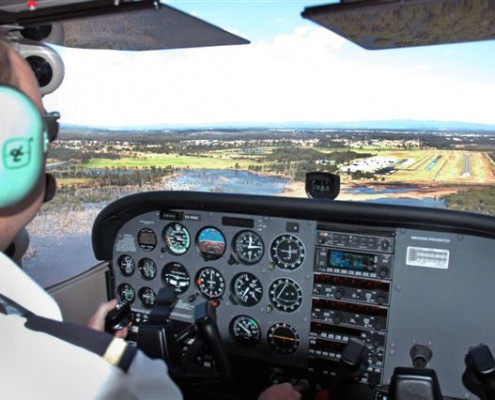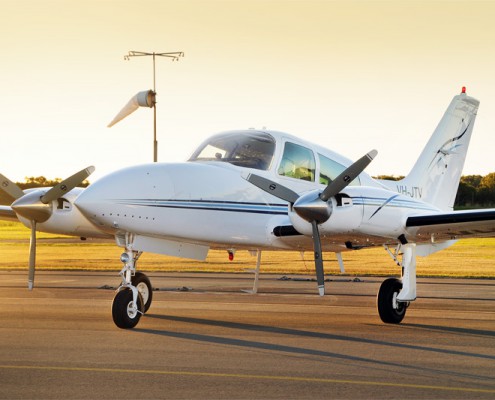Commercial Pilot Licence
After gaining a PPL, candidates who aspire to a career as a pilot will complete the Commercial Pilot Licence (CPL). The PPL holder will already possess the skills and knowledge to safely operate an aircraft in a private setting, so the CPL course focus is on development of existing skills to satisfy the requirements of operations in the commercial environment. CPL training hones handling skills, improves knowledge, introduces more complex aircraft, and simulates commercial pressures such as working within time constraints and operating in more challenging weather conditions.
Prerequisites
- Must be minimum of 18 years of age on completion of course (candidates can start prior to reaching 18 years old)
- CASA Class 1 medical
- Ability to speak and understand fluent English
Overview
Complete minimum of approximately 200 hours of flying training including:
- 54 hours solo hour building (C172)
- 12 hours dual training (C172)
- 16 hours solo training (C182)
- 24 hours dual training (C182)
Students will undertake the following sequences during their course:
- Complex Aircraft Familiarization
- Handling Phase:
- All Circuit Sequences
- All Airwork Sequences
- Navigation Phase:
- Dual Navigation Exercises
- Solo Navigation Exercises
- Dual Aerial Photography Exercises
- Navigation and Loading Planning Exercises
Flying lessons in the CPL syllabus are highly varied, ranging from 1hr handling flights to 4 hour simulated charter flights. Briefings accompany all flights and vary between 20 minutes and 2 hours.
Duration
- Full time | 6 Months
- Part time | As required (progress through syllabus at your own pace)
- Recommended minimum lesson frequency for part time training is 2 lessons per week
Theory
The Commercial Pilot Licence – Aeroplanes (CPL-A) theory is ideally learned prior to the CPL flying course. A number of students choose to self-study at the
ir leisure, although structured classroom courses are often undertaken.
There are seven multi choice CPL(A) exams to be completed prior to commencing the CPL flying course.
- Human Factors
- Meteorology
- Air Law
- Aerodynamics
- Performance
- Navigation
- General Knowledge (Systems)
A single textbook is available for each of the seven exam subjects. Structured classroom courses usually progress at a rate of around 1-2 weeks per subject, and students choosing to self-study should allow 3-4 weeks per subject.
Outcomes
On completion of the Commercial Pilot Licence Course, you will be able to:
- Act as pilot in command of an aircraft during most commercial operations
- Act as co-pilot of a multi-crew aircraft during commercial operations
Endorsements
On completion of their CPL(A) training, most Commercial Pilots very quickly go on to add further endorsements or ratings to improve job prospects.
Common additions to the CPL(A) include:
- Cessna 200 Series Experience Course. Get familiar with the aircraft you’ll likely fly during your first job.
- Multi Engine Aeroplane Instrument Rating. Fly multi engine aircraft under the IFR for commercial purposes.
- Flight Instructor Rating. Learn to teach the next generation of aviation students.
Members are billed for the flying time conducted during a lesson, measured on the aircraft’s VDO meter to the nearest 1/10th of an hour. Other costs may include Instructor briefing time before a flight or airport landing fees (Not at Redcliffe, but other aerodromes during navigation training).
Payment is required on completion of a lesson and the following methods of payment are accepted:
- EFTPOS
- Visa
- Mastercard
- Cash
- Bank Transfer (prior to flight)
Members may choose to pre-pay a component of their course for ease of billing, but this is not a requirement.
Next Steps
Cessna 200 Series Familiarisation
Get familiar with the Cessna 206 and 210 – success at your interview might depend on it.
Multi Engine Instrument Rating
Take control of a multi engine aircraft and fly the IFR with reference only to instruments.
Flight Instructor Rating
Learn to teach ground and flight principles to the next generation of aviation students.






